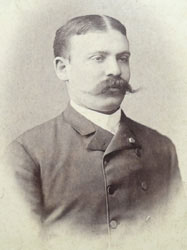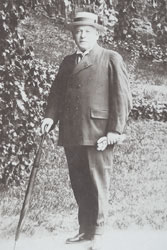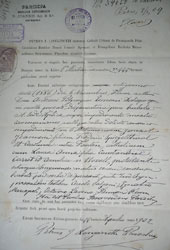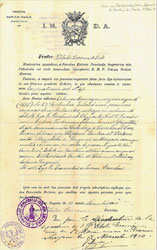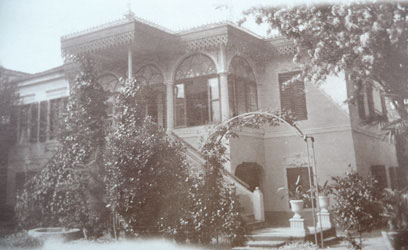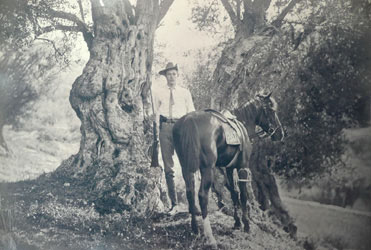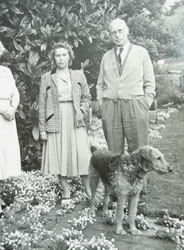Rose Marie Caporal | Alessandro Pannuti | Ft Joe Buttigieg | Mary Lemma | Antoine ‘Toto’ Karakulak | Willie Buttigieg | Erika Lochner Hess | Maria Innes Filipuci | Catherine Filipuci | Harry Charnaud | Alfred A. Simes | Padre Stefano Negro | Giuseppe Herve Arcas | Filipu Faruggia | Mete Göktuğ | Graham Lee | Valerie Neild | Yolande Whittall | Robert Wilson | Osman Streater | Edward de Jongh | Daphne Manussis | Cynthia Hill | Chris Seaton | Andrew Mango | Robert C. Baker | Duncan Wallace QC | Dr Redvers ‘Red’ Cecil Warren | Nikolaos Karavias | Marianne Barker | Ümit Eser | Helen Lawrence | Alison Tubini Miner | Katherine Creon | Giovanni Scognamillo | Hakkı Sabancalı | Joyce Cully | Jeffrey Tucker | Yusuf Osman | Willem Daniels | Wendy Hilda James | Charles Blyth Holton | Andrew Malleson | Alex Baltazzi | Lorin Washburn | Tom Rees | Charlie Sarell | Müsemma Sabancıoğlu | Marie Anne Marandet | Hümeyra Birol Akkurt | Alain Giraud | Rev. Francis ‘Patrick’ Ashe | Fabio Tito | Pelin Böke | Antonio Cambi | Enrico Giustiniani | Chas Hill | Arthur ‘Mike’ Waring Roberts III | Angela Fry | Nadia Giraud | Roland Richichi | Joseph Murat | George Poulimenos | Bayne MacDougall | Mercia Mason-Fudim née Arcas | Eda Kaçar Özmutaf | Quentin Compton-Bishop | Elizabeth Knight | Charles F. Wilkinson | Antony Wynn | Anna Laysa Di Lernia | Pierino & Iolanda Braggiotti | Philip Mansel | Bernard d’Andria | Achilleas Chatziconstantinou | Enrichetta Micaleff | Enrico Aliotti Snr. | Patrick Grigsby | Anna Maria and Rinaldo Russo | Mehmet Yüce | Wallis Kidd | Jean-Pierre Giraud | Osman Öndeş | Jean François d’Andria | Betty McKernan | Frederick de Cramer | Emilio Levante | Jeanne Glennon LeComte | Jane Spooner | Richard Seivers | Frances Clegg
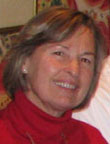 |
I am a descendant of the Borrell family through Cornelia Borrell, who may have been the daughter of Henry Perigal Borrell and his wife Emily née Boddington, who were married in 1820 in Smyrna. Cornelia Borrell was the grandmother of my grandmother Laura Hélène Marianne Caroline Spiegelthal. She (Cornelia), married George Constantine Carrer and had 5 children. He was a Venetian aristocrat from the days when Venice had her own empire. Cornelia had previously been married to a member of the Keun family who were Dutch, but her husband died young, leaving her, according to my grand mother, with five children.
Alfred Keun was one of the sons of the Keun/Borrell marriage. He was living in Smyrna when my grandmother, (Laura Spiegelthal) left school in Paris and returned to Smyrna where her father had been interned by the Turks for the length of the First World War. While she was there, she met and married a young British Vice Consul, Edwyn Cecil Hole in 1919. Laura and Edwyn met Alfred Keun regularly until the fire of Smyrna in 1922. Alfred lived with his family in a beautiful house [this one?] on the waterfront, together with his widowed sister Leontine, who had been married to an Austrian Admiral. Alfred Keun, according to my grandmother, was acting as the Hon. Dutch Consul in Smyrna. He had also adopted and educated his orphaned nephew, Albert. Albert went on to marry a Greek lady, Ada Comnenos. Alfred Keun had two children of his own, a very beautiful daughter Valerie [range of letter covers] who married into the noble Italian family of the Borghese in 1900. Valerie and Prince Livio had three sons before he divorced her in 1912. Prince Junio Valerio Borghese, their son, captained a submarine in the Second World War which possessed the new Italian weapon, the human torpedo, and successfully breached the defences at Gibraltar in 1941, entering the harbour and damaging three ships. Alfred also had a son Georges who carried on the family’s Import/Export business, Lavino Keun and Co, at 155 Fenchurch Street, London. George’s son Philippe fought in the French resistance during WWII and was caught and shot by the Germans.
Cornelia and George Carrer had a daughter, Laura Anna Carrer, who married John Henry Étienne Spiegelthal in Smyrna, in 1886. Spiegelthal, was my grandmother’s (Laura Hole’s) maiden name. Her grandfather Friedrich Wilhelm Spiegelthal was born in Paderborn, Prussia in 1829, but left the land of his birth and emigrated to the United States in 1846. In 1850 he applied for and got US citizenship - (see photo of the original document). I knew my grandparents, Laura and “Teddy” very well. One of my favourite bedtime stories was of gt grandpa Spiegelthal being chased by the red Indians and being caught by them. He was fortunate to have been rescued when he had been partially scalped. I always wondered what being partially scalped involved. His US passport (which I have in my possession), mentions “a scar over his eye”. He left for Smyrna soon after this as, according to the family, his scar was painful in the cold Northern climate. This might have been the reason as to why he emigrated to Smyrna, although, I suspect that it was more likely that one of his brothers, Ludvig Peter, an amateur archaeologist, was the Prussian Consul there. In 1854, during an archaeological dig at Sardis, Ludwig Peter tunnelled into a huge mound and discovered the tomb of King Alyattes, (c. 610 – 650 BC), the father of Croesius. The date is significant as Friedrich Wilhelm was definitely in Smyrna in 1855, when he married the daughter of a wealthy French family, Caroline Marianne de Fonton1 - see above for a copy of the marriage certificate. They had two children, John Richard Spiegelthal born 1857 and a daughter Marianne of whom I know very little about. She married a Turk by the name of Beyan and had two children, Fédéric and a daughter Ferida. I was told that Beyan was Minister of Agriculture to the last Sultan. After Ataturk took over the country in 1921, Beyan lost his position and disappeared. I never heard what happened to him, but Marianne was looked after subsequently by her brother John and after his death, I know that my grandmother helped Ferida until she died.
All the documents which I possess came from my grandmother. Somehow she hung on to them through thick and thin. Possibly having a German name, she needed to prove her French citizenship during the war with Germany. The family claimed French citizenship through Friedrich Wilhelm’s wife Caroline de Fonton.
My Grandmother died twenty years ago. Some time before her death she had written nine pages of what she called her “Ancestors”, which my mother only discovered by chance in the Summer of 2008. A lot of the information in this article has come from this document. In it she refers to her grandmother as “that English woman - Boddington”. In fact her grandmother was Cornelia Borrell; her name can be seen clearly on the marriage certificate of her daughter Laura Carrer to John Henry Étienne Spiegelthal; it seems logical to think that the Boddington lady was probably Emily Boddington, wife of Henry Perigal and mother of Cornelia. Unfortunately, in spite of much research, I can’t find any information on this lady. Perhaps one of my readers can help? My grandmother was an old lady when she wrote about her ancestors, and I have noted a few contradictions in it.
|
|
My family on both sides had forebears in Smyrna going back at least into the 18th century. My maiden name was Blackler; my father’s family were immensely proud of their American ancestry which they could trace back to the Declaration of Independence, which was signed by an ancestor on the maternal side. My paternal grandfather William Blackler’s namesake, Captain William Blackler, captained the boat which is depicted in the famous painting by Emmanuel Gottlieb Leutze “Washington crossing the Delaware” in 1876, when George Washington led the revolutionary army against the English and Hessian troops in the Battle of Trenton in 1776. This magnificent picture was painted in 1851 and can be seem in the Metropolitan Museum of Art in New York. My great grandfather, Francis Chipman Blackler came to Smyrna in about 1830 - the house in Buca may be a later residence as the inscribed date with his initials is 1855. He and his brother in Boston came from a shipping family and decided that one of them should go and live in Smyrna to increase trade with the Far East and China. The brother ran the American side of the business. They owned at least three ships which were pirated by French privateers. On hearing the news that the family business had collapsed Francis Chipman had a heart attack and died in 1875. His only son Francis (Frank) was called home from England where he was at a boarding school in Highgate, London to support his mother and six sisters. He joined the carpet firm of William Griffitt and Co. and eventually married one of his daughters, Mary Rebecca in 1884. Curiously, history repeated itself as William Griffitt had also joined the company when it was owned by his future father in law John A. A. Gout, and he also went on to marry his daughter Louise Elizabeth in 1847. The Blacklers became carpet traders until the Fire of Smyrna in 1922, when they were forced to flee for their lives, and ended up in Athens. Frank Blackler had a sister Rose who married the educationalist Alexander Mclaughlin whose memoirs create a vivid picture of the times and politics of Smyrna where he spent a good portion of his life.
|
|
Edwyn and Laura Hole were also in Smyrna at the time of the Fire. My grandfather was involved in evacuating the British nationals and helping to give many of the British Levantines passports in order to escape from the turmoil. The British navy which were anchored off shore together with ships from other countries sent a small rowing boat to rescue my grandmother, my mother aged two, and her brother who was only two months old. They escaped with nothing else but the clothes they were wearing.
I am quite sure that there is a Borrell/ Boddington connection with my family, and I do hope that the Keun family will be able to help me prove this. Sadly, my grandmother didn’t mention the first name of Cornelia Borrell’s first husband Mr Keun, but I do have the names of at least two of his children and I do know the history of some of his grandchildren, and that his import/ export business was later in Fenchurch Street, London. The fact that my grandmother knew that Boddington was a family name, and that Borrell was definitely the name of her grandmother, it has to be more than a coincidence that there was a marriage between these two families. However, this can only be conjecture at this juncture. I hope that some one reading this can fill in the missing names.
I have in my possession, an old citrine pendent with the initials DEB on it. I hope that it stood for Emily Boddington, but it could also have come from the Borrell side of the family.
From the French Wikipedia entry of Charles Fonton we get the following information: ‘During the 17-18th centuries the various Western Embassies devoted time to understand the ways of the Ottoman Empire and in addition to language, history and archaelogy, music featured. The two names that come to the fore in the latter studies are Charles Fonton and Antoine de Murat. Charles Fonton (b. 1725) came from a French father Pierre Fonton (1687-1756) and a Latin Levantine of Pera, rose up to become the first dragoman of the French Embassy in Constantinople. His major work is ‘Essay sur la musique orientale comparée à la musique européenne’ [Essay on Oriental music compared to the music of Europe], Constantinople, 1751. This work not only analyses Turkish Classical music of the 18th century and its various notations and style but details the various musical instruments used. Having spent 10 years in Aleppo and Cairo, he was appointed in 1760 the dragoman of the French Consulate in Smyrna and then rose to become the chancellor dragoman, passing the remainder of his life there, dying there in 1793 and is buried in the St. Polycarp Cemetery, and while the text is now illegible, the armorial on the tombstone confirms his grave in that church yard. With the permission of the French king (required presumably when marrying outside the French fold?) in 1765 he married Therese Bremond with whom he had several children: Charles who in turn became chancellor of the consulate of France in Smyrna, and transferring his service to Russia with the French revolution and also a period as the representative of Ragusan Republic. The other son was Étienne-Stanislas who became a merchant in Smyrna and daughter Hélène Lucrèze who married Étienne Escalon, giving rise to the family of Escalon de Fonton.
In addition to the above listed book other references worthy are:
Anne-Marie Touzard, ‘Un drogman musicien: coup d’œil sur la vie et les œuvres de Charles Fonton’, [A drogman musician: glance on the life and works of Charles Fonton] Istanbul et les langues orientales, Varia Turcica, édité par Frédéric Hitzel, Editions l’Harmattan, 1997, p. 197-214.
Eckhard Neubauer, ‘Der Essai sur la musique orientale von Charles Fonton mit Zeichnungen von Adanson’ [Essay on the oriental musis of Charles Fonton with designs from Adanson], Frankfurt am Main 1986, 1999 (The science of music in Islam 4).
Cem Behar, ‘18. Yüzyılda Türk Müziği - Charles Fonton’ [18th century Turkish Muzic - Charles Fonton] Pan Yayıncılık, 5. Şark Musikisi (Avrupa Musikisiyle Karşılastırmalı Bir Deneme), 1987
The original 100 page manuscript of Charles Fonton’s book (appears not to be published since as is in French) in held in the Paris National library (Fr. Nouv. Acq. 4023).
Further information on the Fonton family:
2- It seems William Blackler had an interest in the recently discovered Virgin Mary’s house, near Ephesus, as this article is in the collections of the British Library: ‘Panaghia Capouli; or, the House of the Blessed Virgin Mary at Ephesus, by W.F. Griffitt Blackler, in: The Treasury, April, 1907’ - General Reference Collection P.P.357.mba. Vol. 10.
